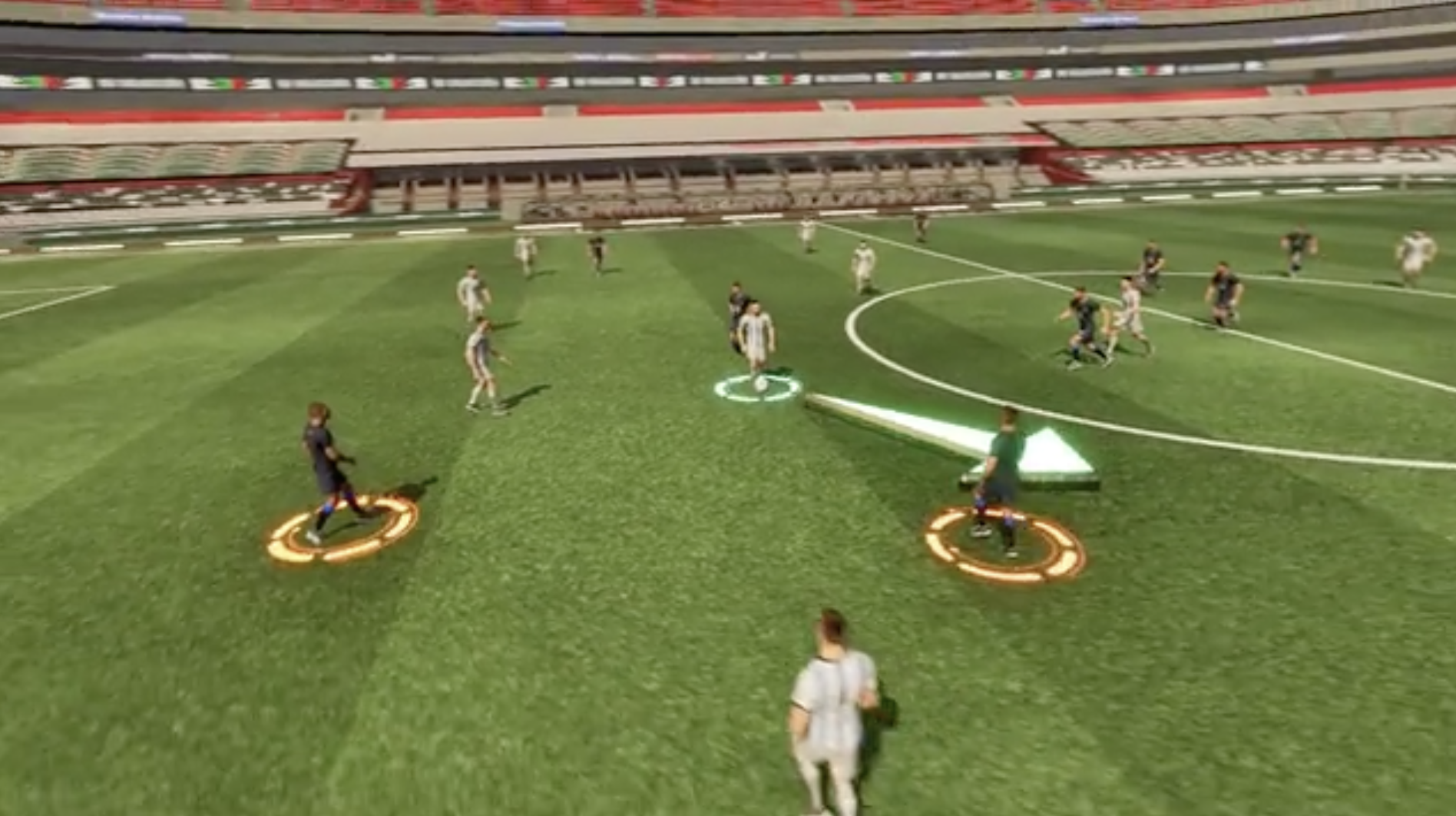Four ways to up your sports broadcasting game in 2024
Broadcast
Ahead of the upcoming events that will capture the world’s attention including the 2024 Olympics and Paralympics, the Euro Football Championships and the T20 World Cup to name a few, broadcasters are on the hunt for exciting ways to make their shows stand out. We recently hosted a webinar, with special guest Senior Director of Technical Services for TUDN, Alexis Salinas, to discuss how to deliver impressive programming. Here are four of the biggest takeaways.
Make data a main character
A common mistake broadcasters make, says Disguise’s Chief Creative Officer Miguel Yabrudes, is sticking to an overly simplistic approach to data. A recurring theme of the webinar was the growth of audience expectations over time. In the case of data, Yabrudes argues, sports fans have become more knowledgeable. The increase in online betting has increased awareness of more in-depth statistics, and the explosion in popularity of fantasy sports leagues has led to an audience that is more engaged with game stats than ever before.
This gives broadcasters an opportunity to incorporate more incisive analysis into their shows, going beyond lap times and points scored. At the same time, technology now enables live statistics to be incorporated automatically into graphics, keeping fans informed and heightening the excitement of the event. It’s time, then, to become more creative with both the types of data we use in sports broadcasting and the ways we incorporate it into our programming.
Use technology to create distinct visual experiences
For TelevisaUnivision’s coverage of the 2021 Olympics in Tokyo, the company wanted to use every tool at their disposal to create captivating and, engaging programming that put Mexican audiences in the heart of the action, despite the thousands of miles that separate the two nations.
Creating distinct visual environments that celebrated different aspects of Japanese culture was just the start of the broadcaster’s work to entertain their audiences. To connect the different worlds that talent would present from, the team created a digitally-rendered dragon. Frequently present within the backgrounds of digitally rendered virtual sets, the dragon could be operated using a number of pre-programmed movements and interactions - laughing, growling or flying away - all at the click of a button.
Meanwhile, a Mexican mascot character was also frequently present on set. Though he was also digitally rendered, the character was put front and centre of the stage as an augmented reality addition to broadcasts. A performer in a motion-capture suit had their movements relayed in real-time, enabling the character to react live not only to his fellow presenters but also - thanks to Disguise’s LED screen backgrounds - to the digital dragon. The different environments were designed to speak directly to different audiences, from younger audiences to more traditional viewers.
Make the most of rehearsals and empower your team
Yabrudes was eager to stress how underrated rehearsal time is in the virtual production world. With so much advance prep taking place, it can be tempting to cut rehearsal time while you finesse these elements, or to simply wait until everything is ready.
But rehearsal time is meant to be a refinement of an unfinished product - so make the most of this time and learn from the mistakes you make along the way; discover what’s ready to go, and what needs polishing in pre-production.
Yabrudes champions the wider team for this - in virtual production, cameramen are the talent, he says. Empower your crew by trusting in them to deliver, and asking them for their creative input when looking for solutions. Let them loose creatively, and see what wonders are returned to you.
The analysis they presented continued this vivid approach to sports broadcasting. To further mirror video game worlds, large numbers of the players were recreated as MetaHumans - digital avatars that could be dropped directly into real-time renderings of plays for in-studio analysis. This enabled the team to have extra fun with their coverage, as these avatars morphed into cartoon-like characters to heighten the humor and excitement of revisiting key moments from the games.
Experiment with different visual styles
Live sports analysis can be very repetitive. The same statistics, the same self-serious reportage, and the same hyper-realistic looks from broadcaster to broadcaster, station to station. For their coverage of the 2022 FIFA World Cup in Qatar, TelevisaUnivision wanted to create a distinct visual aesthetic that would draw audiences in and encourage them to look at soccer in a new light.
Their solution was to replicate the look and feel of an offbeat video game where they could interpret the same game data and analytics in a way that younger audiences could relate to. The team created a vibrant virtual island from which presenters could broadcast their coverage of events, and built a digital twin of Mexico City’s Aztec stadium - bringing Mexican soccer fans and their iconic home ground to Qatar itself.
Elevate your broadcast game
TelevisaUnivision has proven that there is no end to the possibilities virtual production offers sports broadcasting. The key is making the most of the limitless ways you can entertain and engage your audiences.
Explore new approaches, don’t be afraid to try new things, and encourage your team to make their wildest ideas a reality, and you’ll be set to reimagine what sports broadcasting can look like.
Senior Director of Technical Services, TUDN

